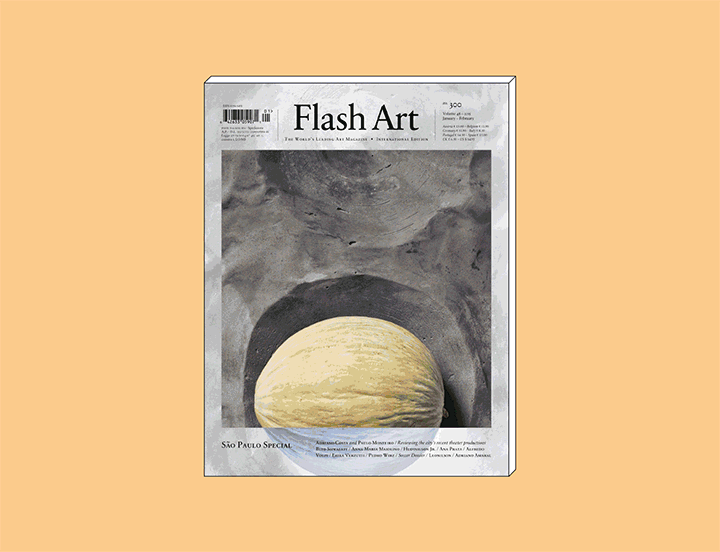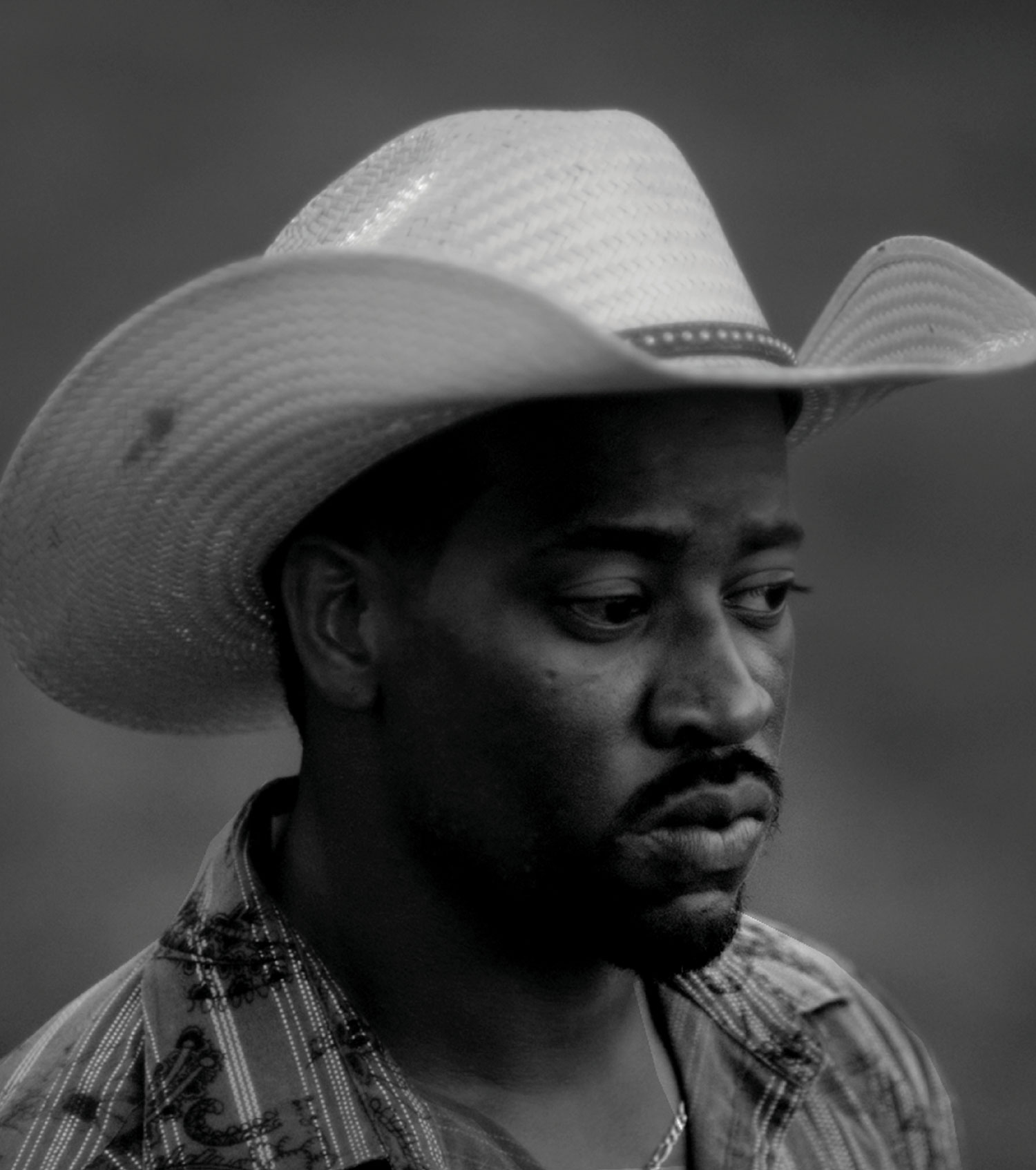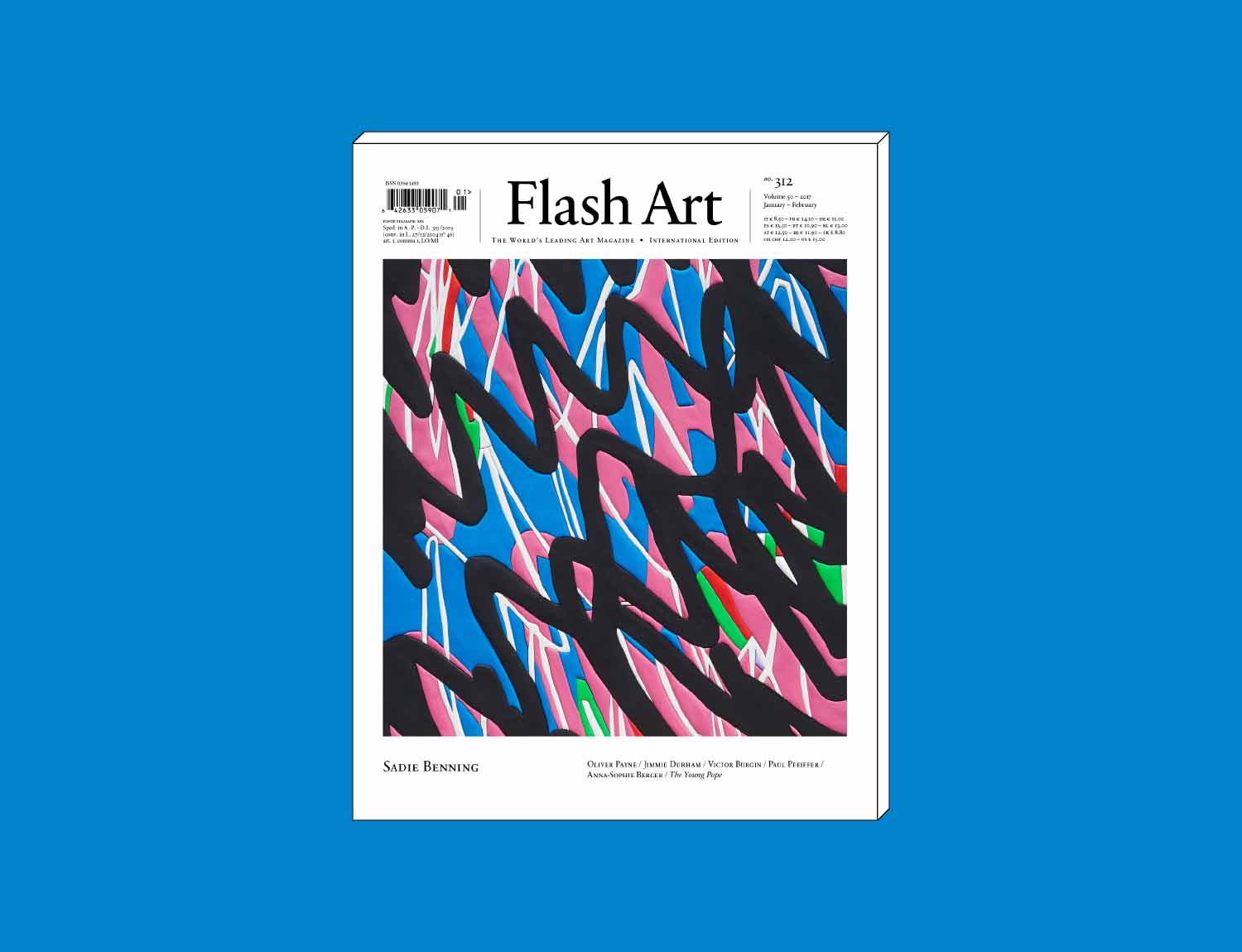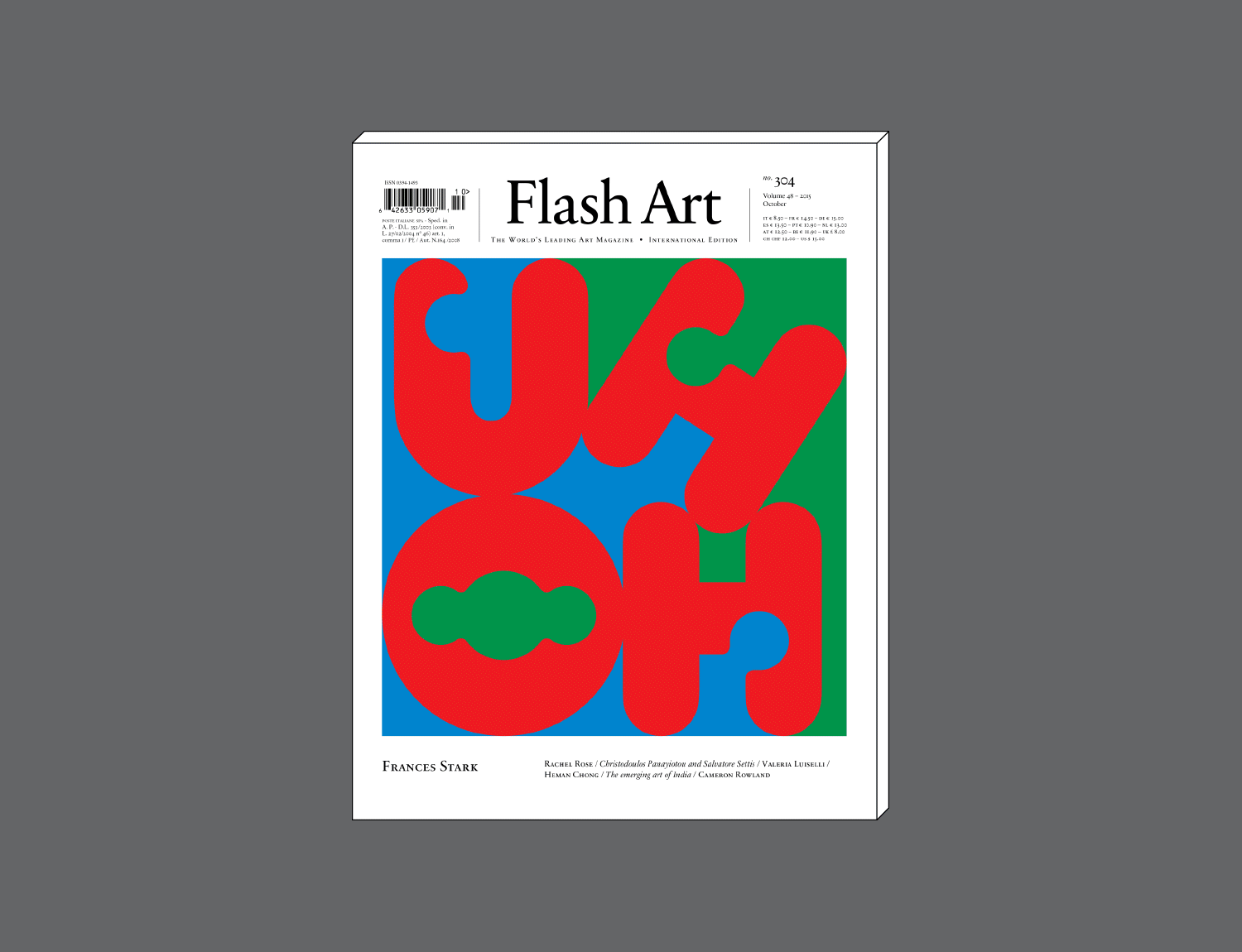We are pleased to announce that the January – February 2015 Issue of Flash Art International, a special edition celebrating the art scene in São Paulo, is out now.
In this issue:
In conversation with Bruno Dunley, Adriano Costa and Paulo Monteiro discuss the mundane dimensions of their art.
“I think nowadays there is a homogenization between the ‘objects of the world’ and the ‘objects of art.’ What I am interested in is the transition of the common object into something “living.” I am interested in transforming a piece of wood, for example, into something that barely looks like a piece of wood.”
— Paulo Monteiro
Tobi Maier reviews the mix of urban life and political debate in São Paulo’s recent theater productions.
Kiki Mazzucchelli introduces the practice of Beto Shwafaty.
Michael Asbury explores Anna Maria Maiolino’s art of becoming.
“Unlike artists whose work is identified with the breakthroughs of their youth, with Maiolino it is the cumulative nature of the practice that reveals its overall sense, its poetic purpose and belongingness.”
— Michael Asbury
A portfolio of Hudinilson Jr.’s Sem Título (c. 1980).
Pedro França introduces the practice of Ana Prata.
Erika Verzutti talks with Michele D’Aurizio about sharing the experience of making.
“Art is a system that embraces miracles and magic. Nevertheless, it taps into an act of courage. You think, OK, this arrangement happened casually on my table, and I believe it’s beautiful. I want to perpetuate it, share it. So it’s a very human ambition: the desire to be ‘bolder,’ to do something a little bit more audacious than staring at the incidental.”
— Erika Verzutti
A portfolio of Alfredo Volpi’s Bandeirinhas and other paintings.
Maria Peres de Pontes introduces the practice of Pedro Wirz.
Nathaniel Wolfson explores the recurrence of soccer in concrete poetry.
Jacopo Crivelli Visconti digs into the almost exclusively autobiographic art of Leonilson.
“Becoming less figurative and more literary, his late works have been interpreted by critics as a reflection of his personal Calvary, despite the fact that many of these iconic traits actually showed up before the disease. Although arguable, this absorption remains perfectly cohesive in the case of Leonilson, an artist who, since the beginning of his career, struggled to inextricably link personal life and artistic production.”
— Jacopo Crivelli Visconti
Gabriel Lima introduces the practice of Adriano Amaral.
Tenzing Barshee recounts a seven-day trip to São Paulo.
“The subsequent city of São Paulo is anonymous and vast. Not only in itself but in comparison to the other big places in our world, São Paulo seems less sophomoric; there is no signifier working as a symbolic stand-in for the city. São Paulo merely represents itself, in its totality. It’s too much information for one representative image.”
— Tenzing Barshee
Reviews:
R.H Quaytman Gladstone Gallery/New York; Amy Lien & Enzo Camacho 47 Canal/New York; Prospect.3 New Orleans; Pierre Huyghe LACMA/Los Angeles; Michel Auder & Józef Robakowski Fahrenheit/Los Angeles; Raimundas Malašauskas & Jason Dodge UTDT/Buenos Aires; Alighiero Boetti Luxembourg & Dayan/London; Mark Leckey Wiels/Brussels; “Regenerate Art” Kunstverein/Munich; “American Producers” Between Bridges/Berlin; Anthony Symonds Eden Eden/Berlin; “Theater Objects” LUMA Westbau/Zurich; Pentti Monkkonen High Art/Paris; Philippe Decrauzat Centre Culturel Suisse/Paris; “Soleil Politique” Museion/Bolzano; Shirin Neshat Mathaf Museum/Doha; Yu Honglei Antenna Space/Shanghai; Matthew Barney MONA/Berriedale (Tasmania)





